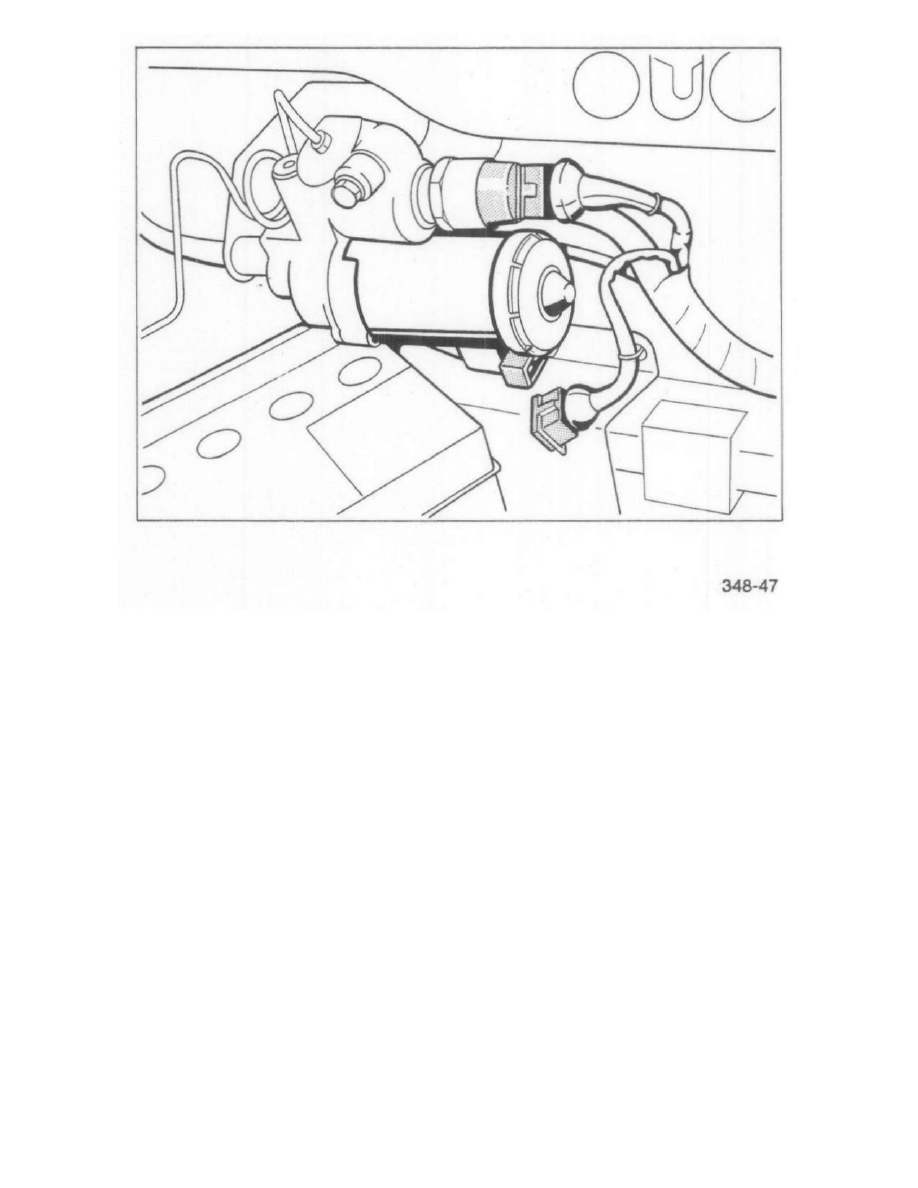911 Carrera 4 Cabriolet AWD F6-3600cc 3.6L SOHC (1990)

-
Immediately after assembly of the parts, fill the fluid reservoir with new brake fluid up to the top edge. Connect the bleeding device to the fluid
reservoir.
Clamp off the overflow hose (ventilation) with a hose clamp.
Switch on the bleeding device. Bleeding pressure approx. 1.5 bar.
Note
The brake pedal must not be operated as long as the bleeding device is connected, otherwise the return line may be forced out of the rubber
plug of the brake booster.
Continue with bleeding the pressure accumulator and valve block.
Bleeding the pressure accumulator and valve block (step 2)
If step 1 was not performed, discharge any accumulator pressure. To do this, disconnect the electrical plug at the pressure pump (pump assembly) and
slowly open the bleeder valve at the pressure accumulator with connected collection bottle. Hold the bleeding hose firmly.
Caution:
A pressure of up to 180 bar exists at the bleeder nipple of the solenoid valve and also at that of the pressure accumulator. Open the
bleeder valve only very carefully. Ensure that the bleeder hose is securely fitted!
Wear protective goggles and protective gloves.
If not already done (if the system was already depressurized), connect the collection bottle to the pressure accumulator bleeder valve and open
the valve.
Move the steering/ignition-starter lock to position 1 (necessary for pump operation). Plug the electrical plug onto the pump. As soon as no air bubbles
are visible any more at the transparent bleeder line of the collection bottle, disconnect the electrical plug and close the bleeder valve.
